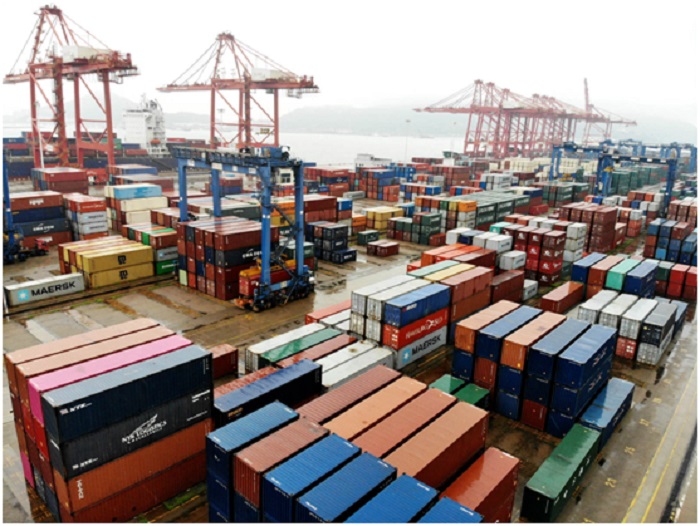



The Chinese economy bounced back to growth in the second quarter (Q2) this year as its key economic indicators continue to move in a positive direction, showing the country’s strong economic resilience despite the negative impact of the COVID-19 outbreak.
China’s GDP expanded by 3.2 percent year-on-year in Q2, following a 6.8 percent contraction in Q1. In June, the surveyed unemployment rate in urban areas was 5.7 percent, down 0.2 percentage points from May. Consumer prices remained generally stable in the first half of this year (H1), with an overall rise of 3.8 percent year-on-year, 1.1 percentage points lower than the first quarter.
The country’s added value of enterprises above designated size grew 4.4 percent in Q2 from a decline of 8.4 percent in Q1. In June, the figure rose 4.8 percent, growing for the third month in a row.
In Q2, the decline of the total retail sales of consumer goods in China narrowed 15.1 percentage points compared with that in Q1, while that of the investment in fixed assets narrowed 13 percentage points from Q1.
The country’s imports and exports continue to exceed expectation, as China’s exports have risen for three consecutive months. In June, the exports increased 4.3 percent, while the imports grew 6.2 percent.
It has not been easy for China, a large developing country with a population of 1.4 billion, to effectively contain the epidemic in a short period of time and reverse an economic downturn, said Liu Aihua, spokesperson of the National Bureau of Statistics (NBS), and director general of the Department of Comprehensive Statistics at the NBS.
This hard-won result demonstrated the strong resilience and potential of the country’s economy, Liu added.
The bounce was also hailed by foreign media and organizations, noting that China has taken the lead in containing the COVID-19 pandemic and in the resumption of work and production, becoming the first major economy to grow since the outbreak, while injecting positive energy into the global recovery.
Thanks to China’s remarkable results in epidemic control and effective macro policies, the 3.2 percent year-on-year growth in Q2, shifting from slowing down to rising, has become a highlight against the severe recession of the world economy, according to Zhang Jun, chief economist with Morgan Stanley Huaxin Securities Co., Ltd.
More importantly, the surge of new growth drivers will facilitate China’s solid pace of recovery.
In the first half, the added value of high-tech manufacturing grew 4.5 percent year-on-year, accounting for 14.7 percent of that of enterprises above designated size, an increase of 0.9 percentage points from the same period last year. Meanwhile, investment in high-tech manufacturing industries has gone up by 5.8 percent.
In H1, urban rail vehicles in service increased by 13 percent, and the output of charging piles increased by 11.9 percent.
The online retail sales of physical goods increased 14.3 percent, accounting for 25.2 percent of the total retail sales of consumer goods, 5.6 percentage points higher than a year ago.
China has witnessed rapid development of new technologies, such as cloud computing, big data and artificial intelligence, and expansion of new business models, including working from home, online education, intelligent construction, and driverless delivery amid the epidemic.
“New industries, such as the digital economy, smart manufacturing and life and health, have become new growth poles, which will provide more support for economic growth in the next phase,” said Liu.
Source: People’s Daily Online


The Executive and members of the.


The Acting Director, FCT Directorate of.


President Bola Ahmed Tinubu has been.



Barely a month after resignation of.


An Abuja based Legal Practitioner, Osuagwu.



Convener of Equitable Remedy, Mrs. Magaret.


Contractors handling the contract for city.


Nigerian government may have concluded plans.


The Diplomatic Correspondents Association of Nigeria.


A rights group, “Follow Me Talk.
Leave a Comment